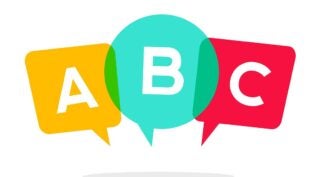3 Ways to Successfully Bootstrap a Product-Based Business
By: YEC

Bootstrapping any business is tough, but establishing a consumer product-based business versus a service-based or tech-based startup creates some very specific challenges.
With service and tech, most of the initial cost during proof of concept comes from time and labor, but with consumer products, your startup costs involve product development, sample production, marketing and sales efforts — and, once your company is off the ground, you then have to find sufficient capital for scaling production and distribution. This cash requirement usually involves some type of purchase order financing as well as the cost of distribution, warehousing and fulfillment.
Related Article: 3 Benefits to Bootstrapping Your Company
Having been down this road myself, I found the key to succeeding is to set up these key factors so that you minimize out-of-pocket expenses and maximize growth potential from the start with the means you have. Here’s how.
Do Your Homework
When you start any company, it’s critical to have a business plan. While it doesn’t need to be 52 pages long, it does need to contain at least three critical projections:
- Sales strategy/projections, which contain all of your best-guess market penetration figures including sources, quantities and dollars sold by quarter.
- P&L projection, which pulls all of the sales data and then adds in your cost of goods, plus all of your projected operating expenses by category based on anticipated percentage of revenue.
- Monthly cash flow, which is based on the requirements and assumptions in the P&L projections.
When bootstrapping a consumer product company, this exercise will quickly reveal that your biggest costs are your cost of goods and your fulfillment costs; plus, the more successful you are at growing your business, the bigger the cash requirements become. If you’re bootstrapping, this is where your early setup and negotiating skills will prove invaluable.
Everything Is Negotiable
The first thing to negotiate is your payment terms with your factory or supplier(s), ideally net 30 or longer if possible. They may say no at first, but keep pushing until you can get some type of terms upfront. This is easier to do early on when the orders are small; you can quickly establish credit and earn trust by paying your invoices on time (or even a bit early) so that as the order sizes grow, your supplier has no concerns about your creditworthiness. In doing so, you will order, receive, ship and collect on goods before you’ve even paid for them. At $100k a year, this can be helpful. At $1,000,000 a year, unless you have a rich uncle, it’s mandatory.
Next, you need to negotiate your fulfillment costs. Whatever you’re shipping, you’ll probably want to try to find an order fulfillment company to warehouse and ship your goods for you. This will keep your time free for design, marketing and sales — which is what you’re good at — and let them do what they’re good at. And if set up correctly, it should cost you less than it would cost to do it yourself.
Related Article: 5 Ways to Make Your Negotiations Less Painful and More Successful
The most important part of of your fulfillment arrangement is how and when you’re billed. For simplicity’s sake, I will use an example of an all-in $1 cost for storage, shipping and handling. If you get quoted $1 for these services, ask your provider to bill you $.05 when your goods arrive at their facility and $.95 when they ship out to your customers, and again with net 30 terms if possible. This minimizes your out-of-pocket expense by collecting on the orders shipped before the bills for shipping those same orders are even due.
Finally, consider your freight providers, whether it’s your freight forwarder who brings your goods to the States or your own UPS/FedEx/USPS account to ship to your end customers. Get the best net terms possible, because every day counts.
Bank on Your Customers, Literally
If your new business is a great product with good demand, you can and should dictate COD/prepaid only for all of your customer orders. If it isn’t, you should get a factor. They decide and guarantee those who are creditworthy and whoever isn’t has to pay credit card terms. In other words, make them the bad guy. Your factor will loan you money against the creditworthy customer orders and the rest pay upfront.
Remember: It’s All in the Timing
If you can follow these three rules, everyone involved still makes the same amount of money and profits. The only thing that changes is when money changes hands and who is holding the risk. Thirty to 60 days can make all the difference.
Although you’ll have to work hard to get this scenario set up, it’s well worth it, because you will be able to grow from a few thousand dollars to a few million with no outside investment, making it a lot easier to focus your energy on growing your business.
This article was originally published by Startup Collective
Author: Joe Huff is the co-founder and director of positivity at LSTN Headphones. In 2010, he left his position as co-founder and CEO of Ramp Logistics to start a new social cause: This Shirt Helps. Since then, his experience and passion both revolve around social enterprise and making the world a better place. Both LSTN and This Shirt Helps were designed to harness the power of consumer purchases and make a positive difference while engaging and empowering people.
2379 Views












